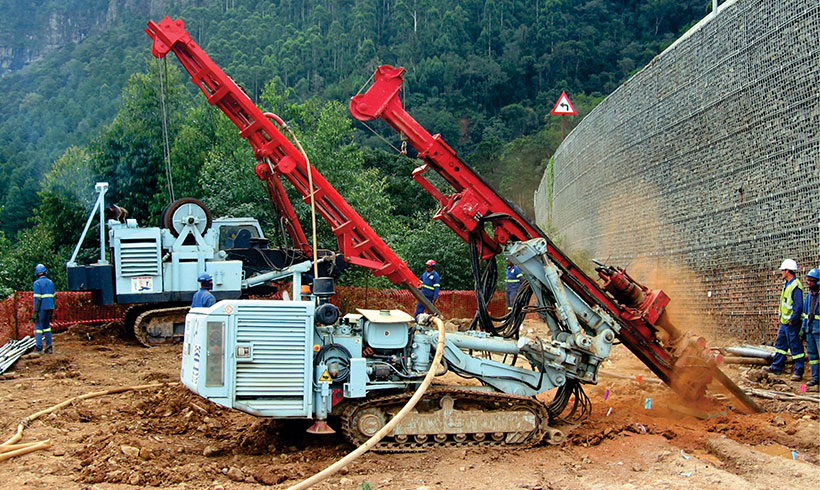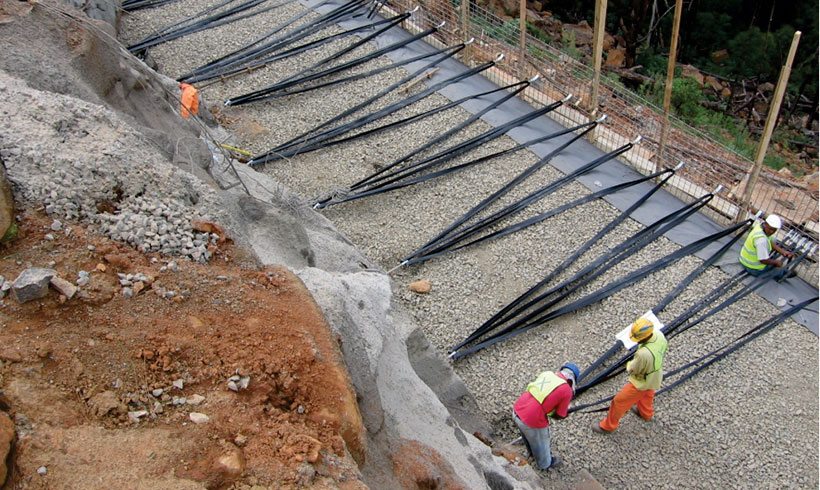Geotechnical Engineering For Construction Projects Fundamentals Explained
About Geotechnical Engineering For Construction Projects
Table of ContentsGeotechnical Engineering For Construction Projects Fundamentals ExplainedOur Geotechnical Engineering For Construction Projects DiariesThe Geotechnical Engineering For Construction Projects IdeasIndicators on Geotechnical Engineering For Construction Projects You Need To KnowNot known Factual Statements About Geotechnical Engineering For Construction Projects
Consequently, during the investigation, it is very important to drill at the needed deepness and the needed variety of holes as per the suggestion of the Canadian Structure Layout standard. Sometimes, the owner might save some Geotechnical Investigation expense yet wind up spending greater than the anticipated during the building expense.The obligations of the geotechnical expert entail giving product screening for construction support. Geotechnical Engineering for Construction Projects. Geotechnical designers evaluate all the field test reports to make sure that building and construction is taking place according to the project spec. Throughout construction, a confirmatory test for dirt compaction is done on-site to ensure that no future settlement happens
After the concrete is put -7 days and 28 days- tests are conducted on concrete examples accumulated from the website to ensure that the concrete put meets the design criterion. Asphalt core is taken after the Asphalt is laid and compacted to confirm that it satisfies the style standard. All research laboratory examination reports are evaluated by the Geotechnical Designer to make sure that it satisfies the project specification.
Geotechnical Engineering For Construction Projects Fundamentals Explained
Geotechnical design plays an essential role in making certain the stability of building and construction projects. Geotechnical design is an important branch of civil design that concentrates on recognizing the behaviour of earth materials, such as soil and rock.

For a dependable foundation and a smooth building and construction procedure, depend supply the know-how you need. Call to get expert recommendations and geotechnical services tailored to your following project.
4 Simple Techniques For Geotechnical Engineering For Construction Projects
When starting a land growth project, comprehending the ground beneath your feet is as vital as the structures you plan to build above it. Our Geotechnical Engineering group analyse the ground, guaranteeing it is appropriate for the recommended development while supplying you with the details called for to satisfy your job goals.
Geotechnical Design takes a look at the formation of the ground, as it is the building obstructs for all tasks. Where structures require to be made with respect to the ground conditions; ground conditions (e.g., soft ground) might call for reinforcing depending on the size of the designated framework. Prior to building, you require to learn about the groundwater, dirt structure, and liquefaction chance of your land.
For websites that are not linked on the local authority facilities additional site examinations would be required to supply technical inputs for on-site stormwater and wastewater. We have actually experienced Geotechnical Designers based in each office, sustaining your geotechnical requirements across the country. Get to out to us to discuss exactly how we can support your following project.
These records are customized to fulfill the particular demands of a job and consist of style parameters and advice for the construction of a series of manufactured structures. As supplying consultancy services covering areas such as incline security and load-bearing abilities for different materials, these designers embark on study and advancement activities to enhance methodologies, equipment, products expertise and analysis covering entire lifecycles.
Little Known Questions About Geotechnical Engineering For Construction Projects.

However, rates of pay typically enhance as your understanding and abilities grow, find this with standards indicating a graduate starting wage of between 18,000 and 28,000 annually in the UK. This climbs to 26,000 to 36,000 with a few years of experience and after that getting to 40,000 to 60,000+ for elderly, legal or master engineers.
With the right application it is feasible to understand the career and gain entry to a difficult yet fulfilling and crucial profession. A rock hound would need to re-train to end up being a geotechnical engineer, although there is a lot of cross-over in between both careers, which might make this much easier - Geotechnical Engineering for Construction Projects. Rock hounds need to have an understanding of soils, rocks and other materials from a scientific point of view, while geotechnical engineers tale their understanding of matters such as dirt and rock technician, geophysics and hydrology and use them to engineering and ecological jobs
When starting, these designers will tend to service less complicated projects, accumulating knowledge and experience prepared for more challenging work later. Geotechnical designers have a tendency to specialise in specific locations as they grow in experience, concentrating on particular frameworks such as railways, roadways or water. These designers also deal with sustainable power, offshore and onshore oil and gas, nuclear power, and a lot more.
What Does Geotechnical Engineering For Construction Projects Do?
The time taken to come to be a geotechnical designer depends on where you are based, where you research and what level of education you desire to achieve before getting in the office. Generally-speaking it takes 3-4 years to reach the standard needs to begin an occupation as a geotechnical engineer.
These procedures enable professionals to evaluate a host of soil auto mechanics including weight, porosity, void-to-solid particle ratio, permeability, compressibility, optimum shear stamina, birthing capacity and deformations. If the structure requires a deep foundation, engineers will use a cone infiltration examination to estimate the amount of skin and end bearing resistance in the subsurface.
When analyzing an incline's balance of shear tension and shear stamina, or its capacity to endure and go through movement, rotational slides and translational slides are frequently considered. Rotational slides stop working along a curved surface area, with translational slides taking place on a planar surface area. An expert's find objective is to identify the conditions at which a slope failure might take place.
Typically, findings recommend that a site's dirt should be treated to improve its shear toughness, stiffness and leaks in the structure before style and building. When it comes time to lay out foundation plans, specialists are progressively focused on sustainability, more particularly how to lower a structure's carbon impact. One method has actually been to replace 20 percent of a foundation's concrete with fly ash, a waste item from coal fire power plants.